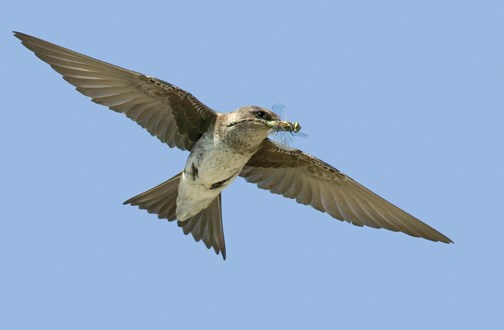The voices of birds have inspired people throughout the ages - it is nature's music.
Something noticed very early by observers is that to fully appreciate the music of birds you need to get up early - before they do! This morning song is known as the dawn chorus and in the right habitats it can be amazing to hear. And one beautiful hot spot is the Conservation Area at Maplewood Flats where there is a nice diversity of habitats including salt marsh, tidal flats, forest, old field, marine and freshwater pond. All of these habitats support their specialty species - i.e. what to listen for.
Spring is the best season to listen for the dawn song, since birds are setting up territories and attracting mates. Most of (but not all) of the singing is done by males. This includes resident species, like the spotted towhee, black-capped chickadee and song sparrow, and new arrivals, like the warbling vireo, black-headed grosbeak, and various warblers from their neotropical wintering grounds in Central and South America. One of the challenges is to remember voices not heard since last year, but we have apps and CDs to help us out.
Not all sounds that birds make are songs, some are calls. Calls are used for various purposes such as to warn of danger, like the shrieks of a robin when a cat is discovered. Other sounds include drumming, like a woodpecker, or air rushing through feathers, like a hummingbird, snipe or night hawk.
Bird songs and calls include musical warbles, chips and twitters. One help in learning is to translate the songs and calls into words. Thus, the black-capped chickadee's song is "teatime" and the robin sings "cheerily, cheerily, cheerup!" And who can forget the "quick-three beers!" of an olive-sided flycatcher?
Some birds, like the chickadee, call "chick-adee-dee" and the towhee's "towhee," making them "name sayers."
On a visit to the conservation area trail, you will be led through and past a nice variety of habitat types. In the woods listen for birds like the warbling vireo, Swainson's thrush, brown creeper, western tanager, black-headed grosbeak, black-throated gray warbler and Pacific-slope flycatcher.
Wetlands feature the red-winged blackbird's "onk-a-ree!", the peeping of ducklings and with a little luck the "kidick-a-dick" of a Virginia rail. Recently bluewinged teal were spotted in the west pond.
The viewpoint over the salt marsh is a great place to watch for swifts, swallows, turkey vultures, hawks and to listen for the mellow croaks of ravens. And maybe a spotted sandpiper too.
Glancing over Burrard Inlet, listen for the cries of gulls, chirps and whistles of eagles and osprey, and the raspy calls of the Caspian tern.
At Osprey Point listen for the liquid warbling notes of the purple martin, and note their nesting boxes on dolphins. Martins winter in South America, making an amazing journey northward to breed.
Other interesting sounds associated with marine habitats incudes the "rattle" calls of the belted kingfisher, the "groonk!" of a startled great blue heron, or the "teer-teer-teer" of a greater yellowlegs.
Across the barge channel bridge listen for the "potato-chip" flight calls of goldfinches, "fitz-bew" of a willow flycatcher or the musical warble of a purple finch.
When the sun warms everything up, watch too for lovely butterflies.
Western tiger swallowtails, red admirals and mourning cloaks have all been spotted recently.
There's so much to enjoy on a visit to the Conservation Area at Maplewood Flats, offering a wonderful world of colour and sound.
Al Grass is a naturalist with Wild Bird Trust of British Columbia, which offers free walks at The Conservation Area at Maplewood Flats on the second Saturday of every month. The next walk will be Saturday, June 13 at 10 a.m. where participants will look and listen for all the signs of spring. Meet at WBT's site office, 2645 Dollarton Hwy, North Vancouver. Walks go rain or shine. wildbirdtrust.org



